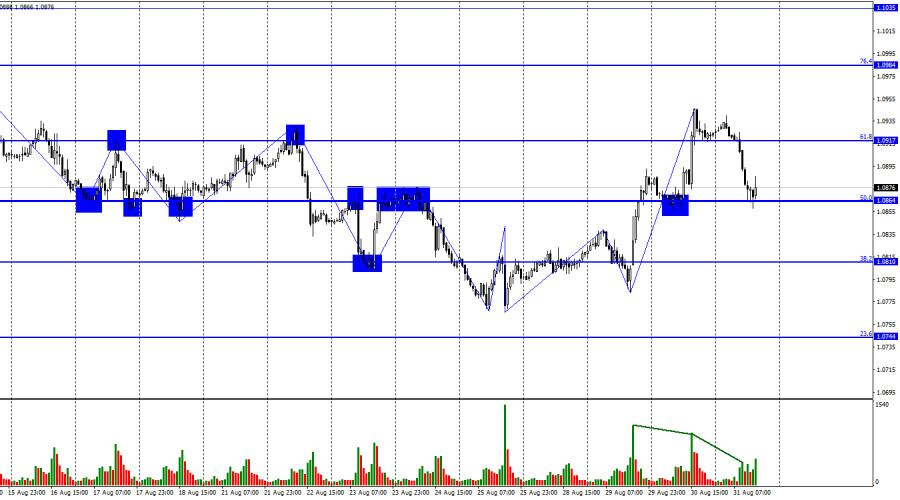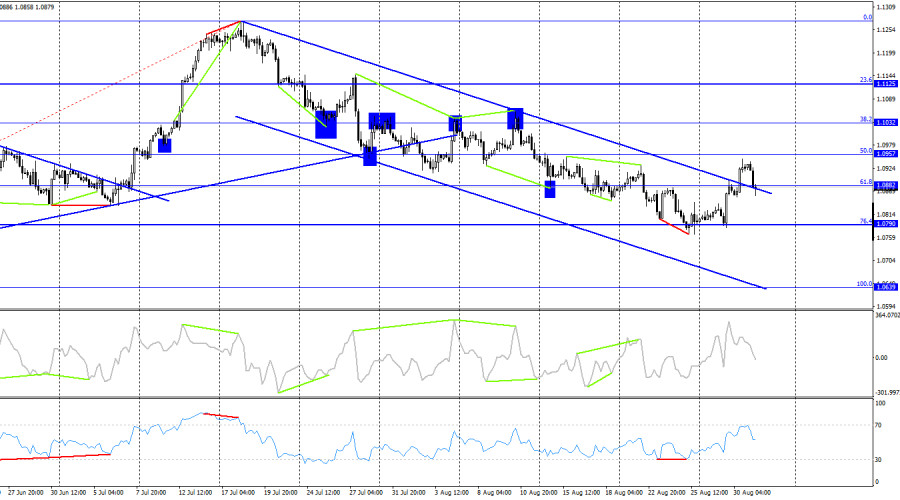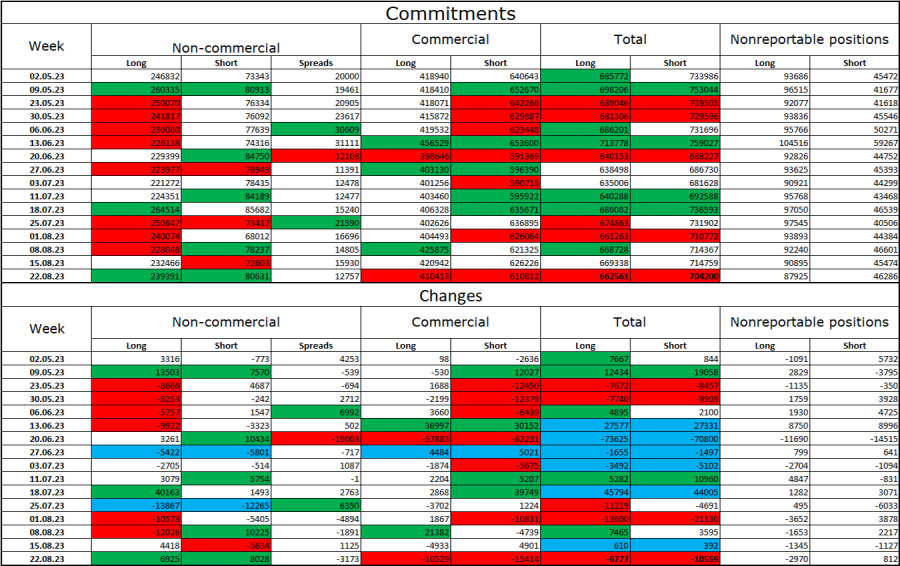
This morning, the EUR/USD pair reversed in favor of the American currency and closed below the level of 1.0917, followed by a drop to the corrective level of 50.0% (1.0864). A rebound of the pair's rate from this level will benefit the European currency and a new rise to 1.0917. Consolidating quotes below the level of 1.0864 will increase the likelihood of a continued decline toward the next corrective level of 38.2% (1.0810).

Over the past few days, the waves have changed their readings and now indicate a "bullish" trend. The rise of the European currency over the last two days was only due to weak statistics from the USA. The euro had no other reason to grow; as of Monday, there was still a "bearish" trend. Thus, bulls now dominate the market, but their high status depends only on the informational background. And even today, it was too weak for the dollar, but it got a bit lucky.
The Consumer Price Index has long been directly associated with the rise or fall of a currency. If inflation is rising or not falling, the market believes that the central bank will raise rates even more and, therefore, buy the currency. And vice versa. Today, it became known that inflation in the EU did not decrease in August, and core inflation fell to 5.3% from 5.5%, which matched traders' expectations. However, the European currency did not rise, and, in my opinion, this might indicate the market's lack of faith in the ECB's ability to raise rates sufficiently to combat inflation. If so, the European currency will likely decline in the coming months.

On the 4-hour chart, the pair consolidated above the descending trend corridor, which greatly concerns me. Mostly, the trend has changed to "bullish," but I wouldn't rush to conclusions. The decline might still resume this week or next, but we need to wait for clarification and a clearer graphic picture on the 4-hour chart.
Commitments of Traders (COT) Report:

During the last reporting week, speculators opened 6925 long contracts and 8028 short contracts. The sentiment of major traders remains "bullish" and is not weakening much overall. The total number of long contracts speculators hold now stands at 239,000, and short contracts at 80,000. The situation will gradually shift in the opposite direction, but bearish traders aren't aggressively challenging the bulls for now. The high number of open long contracts suggests that buyers might close them soon – there's a significant bias towards the bulls. I believe the current figures allow for the continuation of the euro's decline in the coming weeks. The ECB is increasingly signaling the end of the QE tightening procedure.
News calendar for the USA and European Union:
European Union – Consumer Price Index (CPI) (09:00 UTC).
European Union – Unemployment Rate (09:00 UTC).
European Union – Publication of the ECB Monetary Policy Meeting Minutes (11:30 UTC).
USA – Core Personal Consumption Expenditures Price Index (12:30 UTC).
USA – Number of Initial Unemployment Benefits Claims (12:30 UTC).
USA – Personal Income and Expenditures (12:30 UTC).
On August 31, the economic events calendar features six rather important entries, but they have already been released. The influence of the informational background on traders' sentiment for the remainder of the day will be weak.
Forecast for EUR/USD and advice for traders:
Sell positions can be opened upon closing below 1.0864 on the hourly chart, with targets at 1.0810 and 1.0744. Buying is possible upon a rebound from the 1.0864 level with a target of 1.0917. Or upon a rebound from 1.0810.